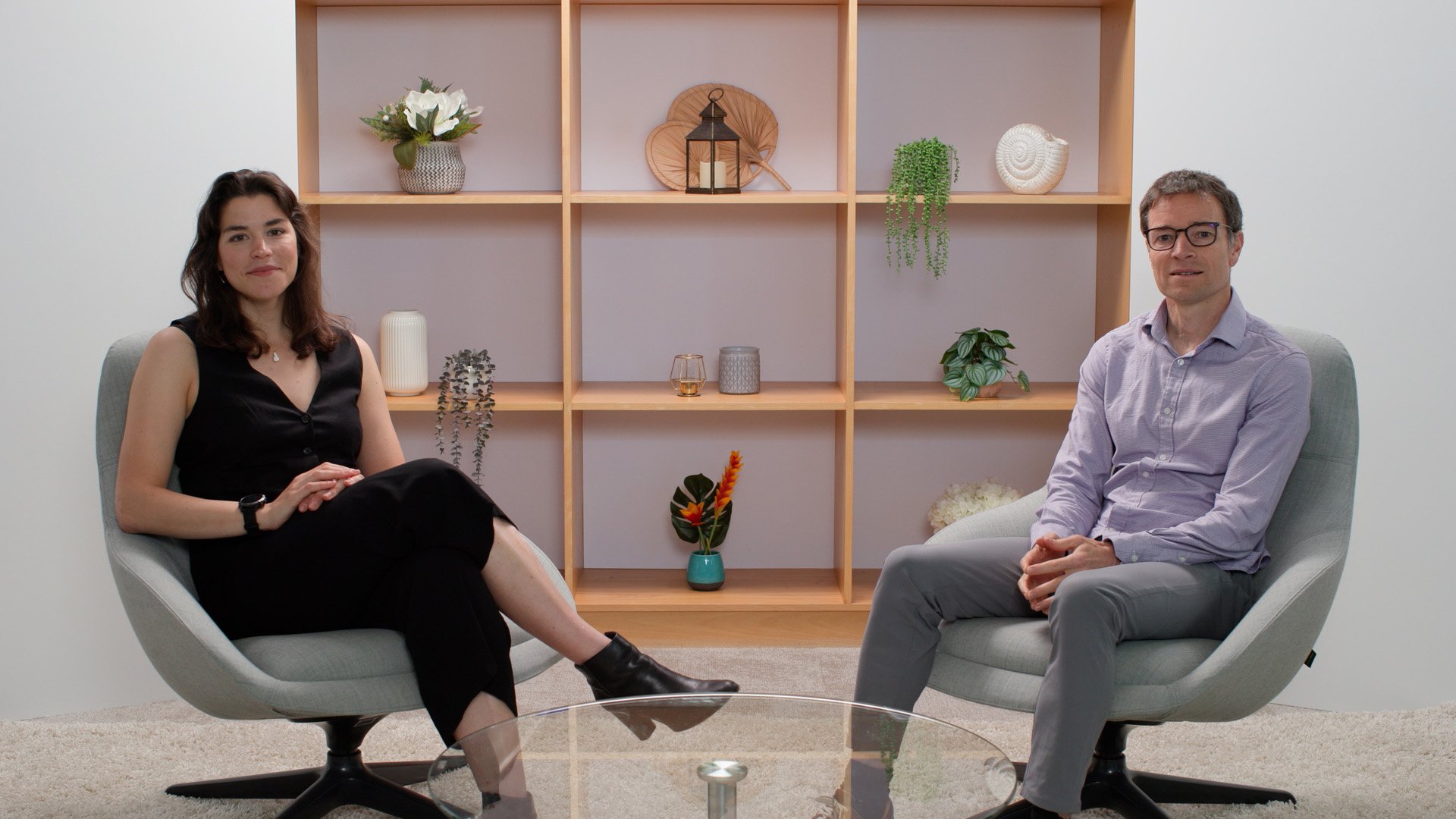Exploring our enduring and high-performing luxury brand holdings and their investment potential.
Your capital is at risk. This communication is for professional clients only, not retail.
“There is an unwillingness to step back and try to assess the core quality which these companies collectively possess – namely a desire by consumers to pay many multiples of cost prices for goods because of the power of brands. I think this is something that the market may consistently underprice and which can afford large opportunities to investors with longer timeframes.”
Nearly twenty years have passed since Mark Urquhart, co-founder of the Long Term Global Growth team, penned these words. Strikingly, they remain as true today as they did then. His observation referred to two luxury names, one of which would go on to become one of the top returning companies we have owned in the LTGG portfolio: Hermès, which has delivered a circa 40-fold share price return since 2004. The other would go on to become one of the top returning companies we didn’t own: LVMH, whose share price has grown circa 11-fold.

Listen to this article
This audio is generated using AI
Our approach to luxury brands
The challenge we faced when examining these companies in the early 2000s was the same then as it is today: how to assess the long-term growth potential of a luxury brand? Standard models simply don’t work, as these businesses can seemingly defy gravity by generating unusually elevated returns on assets year after year, decade after decade. For reference, Hermès’ average return on assets over the past decade is 20 per cent – well over twice any cost of capital implied by any standard economic model. This should in theory be impossible to achieve, especially considering Hermès dates back over 180 years. Such businesses possess a certain je ne sais quoi – a powerful alchemy of authenticity, heritage and symbolism that is incredibly difficult for newcomers to replicate. The potential for such companies cannot therefore be assessed using solely traditional financial models and metrics.
For the fledgling LTGG strategy in 2004, this was a challenge that our team was well placed to accept. Our 10 Question Stock Research Framework was after all purposefully designed to marry the quantitative and qualitative aspects of long-term scenario analysis. Nonetheless, Hermès was not an obvious buy for us back then. The company was already a luxury powerhouse, its family ownership was already over a century old, the brand was already global, and the stock was already sitting on a price-to-earnings ratio that most sell-side brokers considered to be eye-wateringly expensive. Our investment case therefore seemed already baked into the valuation, so what edge could we in LTGG possibly have? The answer lay in our access to perhaps the greatest luxury of all: time.
The market often fails to recognise the power of compound growth. In contrast, we believed Hermès would go on to embody precisely what the nascent LTGG strategy was attempting to achieve – exceptional returns over long periods of time – so long as one remained patient. That said, even our LTGG team was divided on the durability of the psychological power of the brand, but (as our process dictates) they backed Mark’s enthusiasm.
So why did we not pursue LVMH? Unlike Hermès’ mono-brand, LVMH’s sprawling stable of different brands raised questions about management’s approach to capital allocation and so we preferred to monitor from the sidelines. While we eventually came to the view that LVMH was in fact an astute allocator of capital and possessed an admirable time horizon, it was no longer clear what it might add to the LTGG portfolio by that point. The reason was not simply our existing holding in Hermès, but also our 2008 purchase of another stable of brands: Kering.
Known back then as PPR, our central thesis was that the group would evolve from a motley collection of disparate non-luxury brands into pure luxury. Kering would in due course become synonymous with the likes of Gucci, YSL, Bottega Veneta, Balenciaga and others. Moreover, the multi-brand approach implied a degree of diversification, where the ebbing of one brand’s success in any particular period could in theory be offset by the rise of another.
While this case played out in the years that followed, latterly Kering’s valuation became ever more dependent on just one of its brands, Gucci, which had swollen to account for around half of total sales after enjoying rapacious growth for several years. Though the brand successfully leaned into the new generation of younger consumers, its styles veered more toward fashion than luxury, more cyclical than timeless. Gucci’s high net worth customers appeared increasingly alienated. Support from Kering’s other brands hasn’t come to bear, as they remain sub-scale and face headwinds of their own. Taking this together with the impending retirement of Chairman and CEO François-Henri Pinault, who has architected the group’s success over the past twenty years, we took the decision to sell our holding in August 2024 in favour of higher conviction names elsewhere.
Despite ‘only’ a circa 4x return during our 16-year holding period, Kering features among the top ten contributors to LTGG performance since inception in 2004 – ahead of Hermès (and NVIDIA!). This phenomenon is a function not just of its longevity in the portfolio, but also its position size. This serves as a reminder that our task in LTGG is threefold: first identify the outliers, second hold onto them over time, and third hold onto them at scale.
Embracing mistakes and seizing opportunities
This is easier said than done. We will of course make mistakes. In 2012, for example, we were drawn to the increasing luxury status of Burberry, but sold in 2016. It turned out that the brand was more susceptible to general consumption trends than we had anticipated, while the management culture appeared increasingly short-termist.
Our greatest mistake in LTGG, however, would be to miss investing in the next great opportunity. We only need a few of these to drive the majority of portfolio returns. This has been as true for the fast-growing names in the portfolio (the likes of Amazon, NVIDIA, Tesla, etc.) as it has been for the steady compounders such as Hermès. It explains why we have recently invested in Moncler, best-known for its luxury winter wear, and Kweichou Moutai, the Chinese premium liquor brand. We have conviction that both can compound mid-to-high teens revenues steadily over the coming decade and beyond (and returns at potentially even higher rates). Both have formidable competitive moats thanks to their established brand heritages. Both already enjoy remarkably high net margins: Moncler between 20-25 per cent and Moutai close to 50 per cent. Given the predictability of these businesses, and if we hold margins and multiples equal, we believe patience will lead us to see five-fold returns from here.
This leads us back to one final question on Hermès: why do we still own it? With a market capitalisation in excess of $250bn and a price-to-earnings ratio of 50x, many argue that it is overvalued. Yet we believe it is altogether possible that Hermès steadily grows its market share of the luxury goods industry from current low-single-digits to 10 per cent. This would represent mid-teens topline compound annual growth and earnings growth in the high teens or even low twenties. Increasing penetration in ready-to-wear could also drive part of the growth story, while Hermès’ strong pricing power shows no sign of abating. Last but not least, the family ownership ensures brand discipline is as fastidious as ever. In short, and with echoes of our Hermès stock discussion back in the early 2000s, we believe there is still much more runway (excuse the pun) from here for truly long-term investors.
The likes of Hermès, Moncler, Kweichou Moutai and other luxury names in the LTGG portfolio present not a story of pace, but of duration. And as illustrated by the historic examples in this commentary, their returns over time can be luxuriously extreme.
| 2020 | 2021 | 2022 | 2023 | 2024 | |
| LTGG Composite | 56.4 | 61.7 | -48.9 | 24.2 | 21.4 |
| MSCI ACWI | 2.6 | 39.9 | -15.4 | 17.1 | 19.9 |
| 1 year | 5 years | 10 years | Since inception* | |
| LTGG Composite | 21.4 | 14.2 | 14.5 | 12.1 |
| MSCI ACWI | 19.9 | 11.3 | 9.0 | 8.3 |
*Inception date 29 February 2004.
Source: Baillie Gifford & Co and MSCI. US Dollars.
Past performance is not a guide to future results. Changes in the investment strategies, contributions or withdrawals may materially alter the performance and results of the portfolio. Net of fees returns have been calculated by reducing the gross return by the highest annual management fee for the composite. All investment strategies have the potential for profit and loss.
Risk factors
The views expressed should not be considered as advice or a recommendation to buy, sell or hold a particular investment. They reflect opinion and should not be taken as statements of fact nor should any reliance be placed on them when making investment decisions.
This communication was produced and approved in September 2024 and has not been updated subsequently. It represents views held at the time of writing and may not reflect current thinking.
Potential for profit and loss
All investment strategies have the potential for profit and loss, your or your clients’ capital may be at risk. Past performance is not a guide to future returns.
This communication contains information on investments which does not constitute independent research. Accordingly, it is not subject to the protections afforded to independent research, but is classified as advertising under Art 68 of the Financial Services Act (‘FinSA’) and Baillie Gifford and its staff may have dealt in the investments concerned.
All information is sourced from Baillie Gifford & Co and is current unless otherwise stated.
The images used in this communication are for illustrative purposes only.
Important information
Baillie Gifford & Co and Baillie Gifford & Co Limited are authorised and regulated by the Financial Conduct Authority (FCA). Baillie Gifford & Co Limited is an Authorised Corporate Director of OEICs.
Baillie Gifford Overseas Limited provides investment management and advisory services to non-UK Professional/Institutional clients only. Baillie Gifford Overseas Limited is wholly owned by Baillie Gifford & Co. Baillie Gifford & Co and Baillie Gifford Overseas Limited are authorised and regulated by the FCA in the UK.
Persons resident or domiciled outside the UK should consult with their professional advisers as to whether they require any governmental or other consents in order to enable them to invest, and with their tax advisers for advice relevant to their own particular circumstances.
Financial intermediaries
This communication is suitable for use of financial intermediaries. Financial intermediaries are solely responsible for any further distribution and Baillie Gifford takes no responsibility for the reliance on this document by any other person who did not receive this document directly from Baillie Gifford.
Europe
Baillie Gifford Investment Management (Europe) Ltd (BGE) is authorised by the Central Bank of Ireland as an AIFM under the AIFM Regulations and as a UCITS management company under the UCITS Regulation. BGE also has regulatory permissions to perform Individual Portfolio Management activities. BGE provides investment management and advisory services to European (excluding UK) segregated clients. BGE has been appointed as UCITS management company to the following UCITS umbrella company; Baillie Gifford Worldwide Funds plc. BGE is a wholly owned subsidiary of Baillie Gifford Overseas Limited, which is wholly owned by Baillie Gifford & Co. Baillie Gifford Overseas Limited and Baillie Gifford & Co are authorised and regulated in the UK by the Financial Conduct Authority.
Hong Kong
Baillie Gifford Asia (Hong Kong) Limited 柏基亞洲(香港)有限公司 is wholly owned by Baillie Gifford Overseas Limited and holds a Type 1 license from the Securities & Futures Commission of Hong Kong to market and distribute Baillie Gifford’s range of collective investment schemes to professional investors in Hong Kong. Baillie Gifford Asia (Hong Kong) Limited 柏基亞洲(香港)有限公司 can be contacted at Suites 2713–2715, Two International Finance Centre, 8 Finance Street, Central, Hong Kong. Telephone +852 3756 5700.
South Korea
Baillie Gifford Overseas Limited is licensed with the Financial Services Commission in South Korea as a cross border Discretionary Investment Manager and Non-discretionary Investment Adviser.
Japan
Mitsubishi UFJ Baillie Gifford Asset Management Limited (‘MUBGAM’) is a joint venture company between Mitsubishi UFJ Trust & Banking Corporation and Baillie Gifford Overseas Limited. MUBGAM is authorised and regulated by the Financial Conduct Authority.
Australia
Baillie Gifford Overseas Limited (ARBN 118 567 178) is registered as a foreign company under the Corporations Act 2001 (Cth) and holds Foreign Australian Financial Services Licence No 528911. This material is provided to you on the basis that you are a “wholesale client” within the meaning of section 761G of the Corporations Act 2001 (Cth) (“Corporations Act”). Please advise Baillie Gifford Overseas Limited immediately if you are not a wholesale client. In no circumstances may this material be made available to a “retail client” within the meaning of section 761G of the Corporations Act.
This material contains general information only. It does not take into account any person’s objectives, financial situation or needs.
South Africa
Baillie Gifford Overseas Limited is registered as a Foreign Financial Services Provider with the Financial Sector Conduct Authority in South Africa.
North America
Baillie Gifford International LLC is wholly owned by Baillie Gifford Overseas Limited; it was formed in Delaware in 2005 and is registered with the SEC. It is the legal entity through which Baillie Gifford Overseas Limited provides client service and marketing functions in North America. Baillie Gifford Overseas Limited is registered with the SEC in the United States of America.
The Manager is not resident in Canada, its head office and principal place of business is in Edinburgh, Scotland. Baillie Gifford Overseas Limited is regulated in Canada as a portfolio manager and exempt market dealer with the Ontario Securities Commission (‘OSC’). Its portfolio manager licence is currently passported into Alberta, Quebec, Saskatchewan, Manitoba and Newfoundland & Labrador whereas the exempt market dealer licence is passported across all Canadian provinces and territories. Baillie Gifford International LLC is regulated by the OSC as an exempt market and its licence is passported across all Canadian provinces and territories. Baillie Gifford Investment Management (Europe) Limited (‘BGE’) relies on the International Investment Fund Manager Exemption in the provinces of Ontario and Quebec.
Israel
Baillie Gifford Overseas Limited is not licensed under Israel’s Regulation of Investment Advising, Investment Marketing and Portfolio Management Law, 5755–1995 (the Advice Law) and does not carry insurance pursuant to the Advice Law. This material is only intended for those categories of Israeli residents who are qualified clients listed on the First Addendum to the Advice Law.
MSCI Legal Disclaimer
Source: MSCI. MSCI makes no express or implied warranties or representations and shall have no liability whatsoever with respect to any MSCI data contained herein. The MSCI data may not be further redistributed or used as a basis for other indexes or any securities or financial products. This report is not approved, endorsed, reviewed or produced by MSCI. None of the MSCI data is intended to constitute investment advice or a recommendation to make (or refrain from making) any kind of investment decision and may not be relied on as such.
115345 10049607





